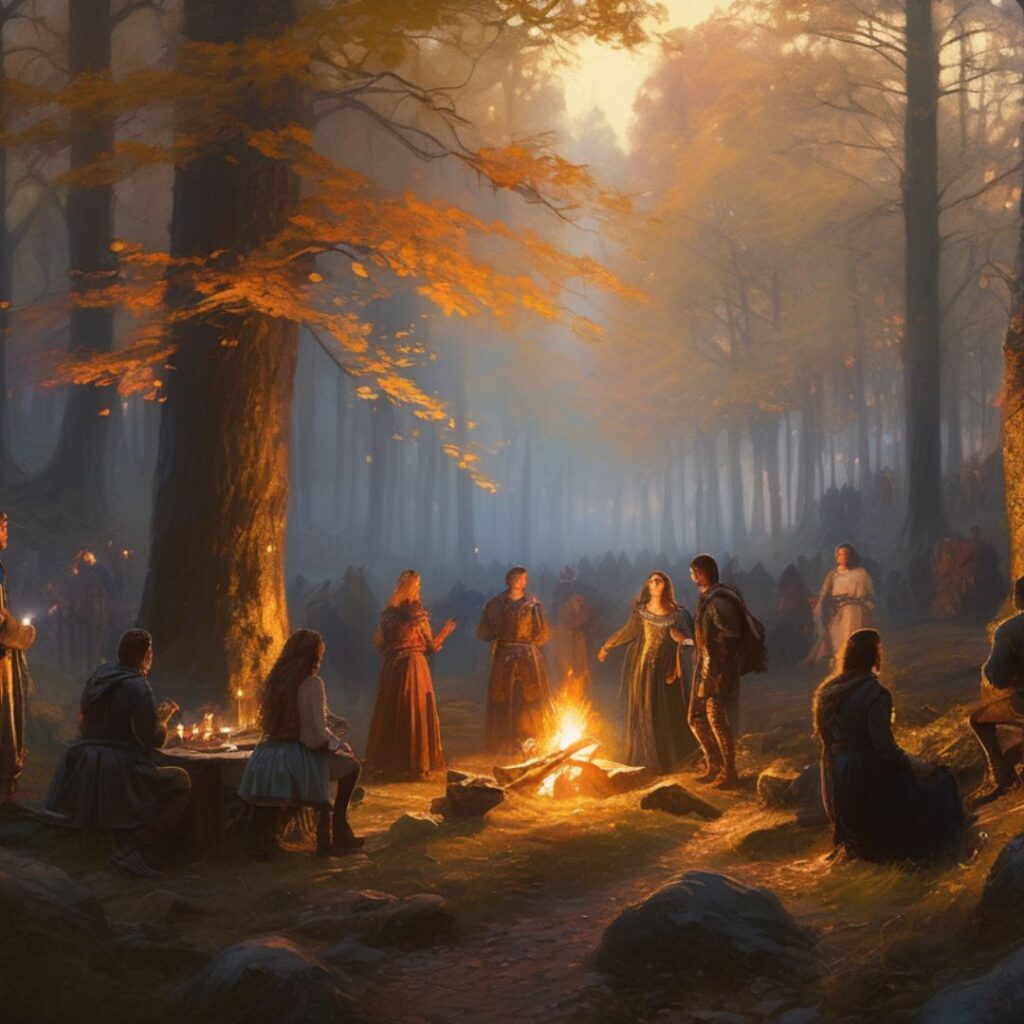For several years, many so-called neo-Celtic pagan festivals have emerged. Some are inspired by Nordic culture, others by Celtic culture, thanks to the Coligny Calendar , an old artifact that teaches us more about the celebrations of our Gallic | Celtic ancestors. We talk about Litha for the summer solstice, Imbolc for February 1st... and we read so much about everything that we no longer really know what is true and what is false. Runes de Chêne invites you to review the basics. And believe us, there is a lot to say...
The Coligny Calendar: A Celtic lunisolar calendar ☀️🌙
It all began in 1897, in Ain, not far from the city of Lyon.
One November (what a coincidence!), a farmer, Alphonse Roux , found in a field, buried under the earth, a canvas with dissolved fibers, containing fragments of bronze. These are in reality the broken pieces of a calendar written in the Latin alphabet, but in the Gaulish language.
This is a major discovery because the Gauls, these Celts of the continent that we locate in Gaul, are in fact known for having left few written traces. But this find will change the situation. It is a Calendar, lunisolar, dated from the 2nd century. We are then in the heart of Romanized Gaul, where Celtic culture and traditions still exist, before Gaulish is lost in favor of Latin, favored in the cities.
This Calendar is extraordinary in several ways. First, because it is lunisolar, and presents a cycle of 5 years of 12 months, each month being divided into 2 fortnights.
A year divided in two
On the Coligny Calendar, the year is divided into two parts: the dark season and the light season. Unlike us moderns, the new year among the Celts does not begin in the middle of winter, or even in spring, but in November, when the night stretches out. This notion seemed to be projected into everyday life, with the new day beginning not at midnight, but at dusk.
This Calendar will also allow us to project its structure onto the world of the island Celts, and allow us to easily deduce the other festivals whose fragments have not been found, such as Beltaine or Lugnasad.
If we apply this calendar to our current months, we would have a layout that could be interpreted as follows:
| Name of the month | Duration | Modern correlation | Associated celebration |
| Samonios | 30 days, mat | November | Samhain, Samonios | Tri Nox Samoni (the 3 nights of Samonios) |
| Dumannios | 29 days, anmat | December | Winter Solstice (the Scandinavian Yule) |
| Riuros | 30 days, mat | January | |
| Anagantios | 29 days, anmat | FEBRUARY | Imbolc | Saint Brigid |
| Ogronios | 30 days, mat | March | Spring Equinox (Germanic Ostara) |
| Cutios | 30 days, mat | April | |
| Giambattista | 29 days, anmat | May | Beltane (Fire Festival) |
| Simvisions | 30 days, mat | June | Summer solstice |
| Equos | 30 days, mat | July | |
| Elembivios | 29 days, anmat | August | Lugnasad ( Lug Festival) |
| Edrinios | 30 days, mat | September | Equinox (Mabon) |
| Cantlos | 29 days, anmat | October |
A modern interpretation:
In the 18th century, a school of thought decided to take over Celtic festivals and create modern Sabbaths from them. The goal? To reinvent a European spirituality dissociated from the Christian tradition, which also borrowed many key dates (Christmas, All Saints' Day, Easter, etc.).
Yet it would be dishonest to tell you that all of these festivals are authentic.
Indeed, half of the neo-pagan or Wiccan festivals (Mabon, Litha, Ostara)... are modern inventions that reinterpret the old in the new. Is this bad? We don't think so. The spirit is more important than the body, the substance more important than the form.
However, be careful not to mix real and fantastic history. Both are important for building oneself, but we cannot impose customs imagined in modern times on people who are more than 2000 years old. Nevertheless, they remain an incredible source of inspiration for us... and we should not deprive ourselves of that!
Calendar of Pagan & Neo-Celtic Festivals (Modern Interpretation)
For the trouble, we deliver to you our own celebration wheel that we use at Runes de Chêne. Feel free to take inspiration from it!
We have also written an article on the Beltaine festival.

If you learned something, leave a comment 💬 or share the article on social networks 🍻
You can also support our mission by visiting ourshop. 🍂🌙




